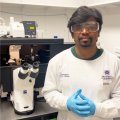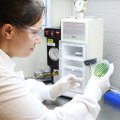The University of Queensland has been working hard to conserve water and has implemented a Water Efficiency Management Plan for all of its campuses and sites, according to Operations Manager, Property and Facilities, Mr Geoff Dennis.
“This Plan has been approved by Brisbane Water and there have been significant reductions in water consumption over the past few years, despite the rapid growth in the University’s building portfolio,” he said.
Mr Dennis said the University had reduced its monthly water consumption from 90,000 kilolitres in March, 2005 to 50,000 kilolitres by February 2006, the latest data available.
He said the University was in a good position to respond to the Brisbane City Council’s drought reduction target of 5-20 percent and so far had exceeded all expectations by achieving an average monthly reduction of 27 percent since June 2005.
Examples of water conservation implemented by the University are (above water restriction requirements):
• sporting ovals and some of the grounds are only irrigated with recycled water from the Fairfield Sewage Treatment Plant;
• Great Court irrigation is from harvested stormwater;
• Ongoing program of installing rain water tanks;
• Ongoing retrofit program of water saving devices for ablutions;
• Transforming the landscape to more drought-resistant species of plants;
• Upgrading equipment that is reliant for water as a heat exchange;
• Using stormwater to supply ablutions;
• Running water and energy efficiency programs across the University to increase awareness and commitment of the University community.
This year the University has committed an additional $400,000 to water conservation in addition to its other environmental programs. The University has also received Government grants for specific water conservation projects.
Mr Dennis said the St Lucia Campus was a major water user in the Brisbane area.
“This is because of the high density of buildings on the site and the diverse range of activities that occur on one of Australia’s largest teaching and research facilities,” he said.
The campus has:
• 120 buildings with 413,000 square metres of floor space;
• 96 hectares of grounds; and
• an average workday population of around 18,000 people;
Key areas of water usage on the Campus are:
• ablutions – in 2004, there were over 1400 toilet pedestals in operation;
• aquatic sporting facility;
• air conditioning cooling towers;
• research facilities;
• private businesses (food outlets);
• sport and Student Union facilities.
Further information: Jan King 0413 601 248
.jpg)



